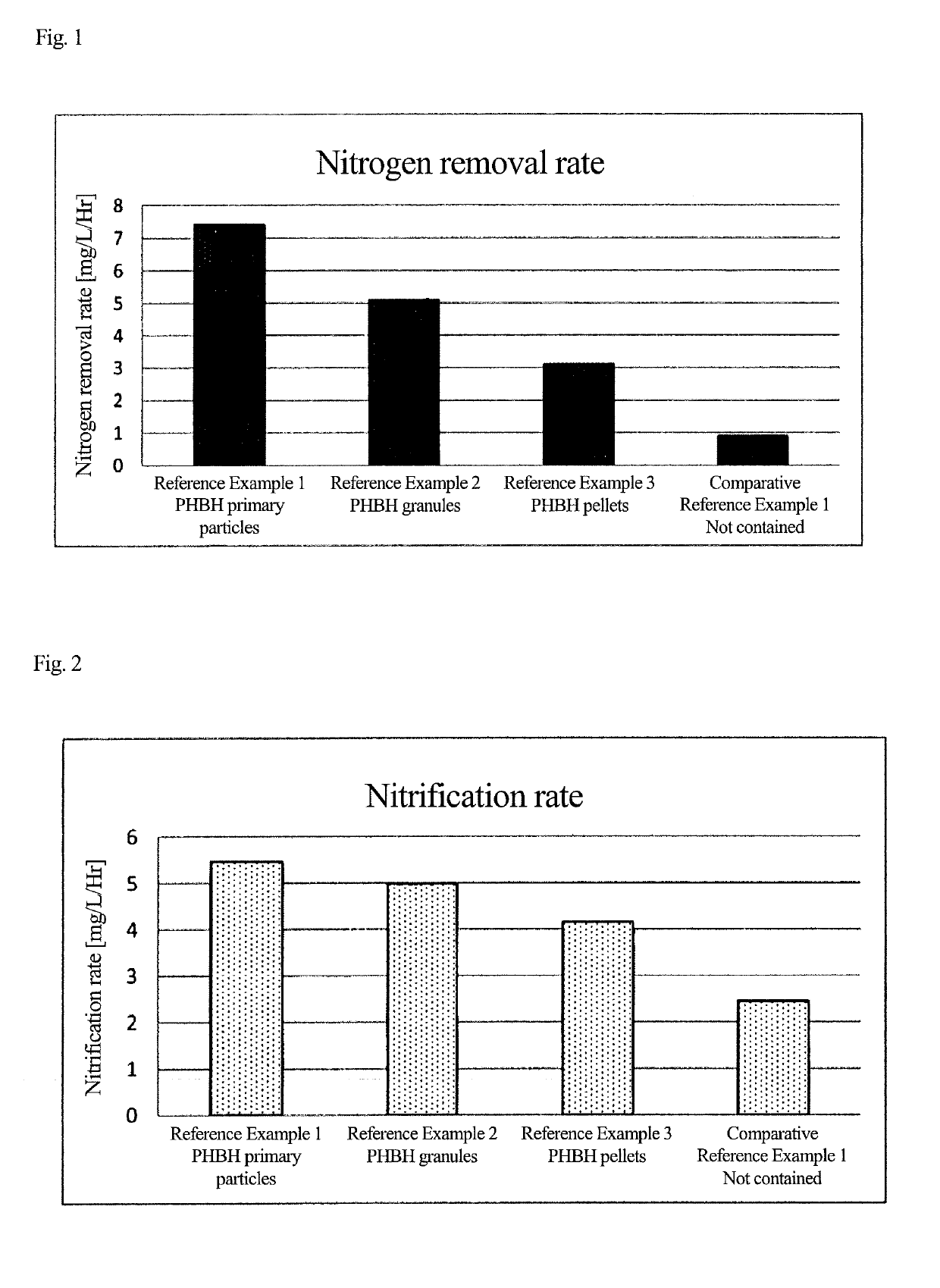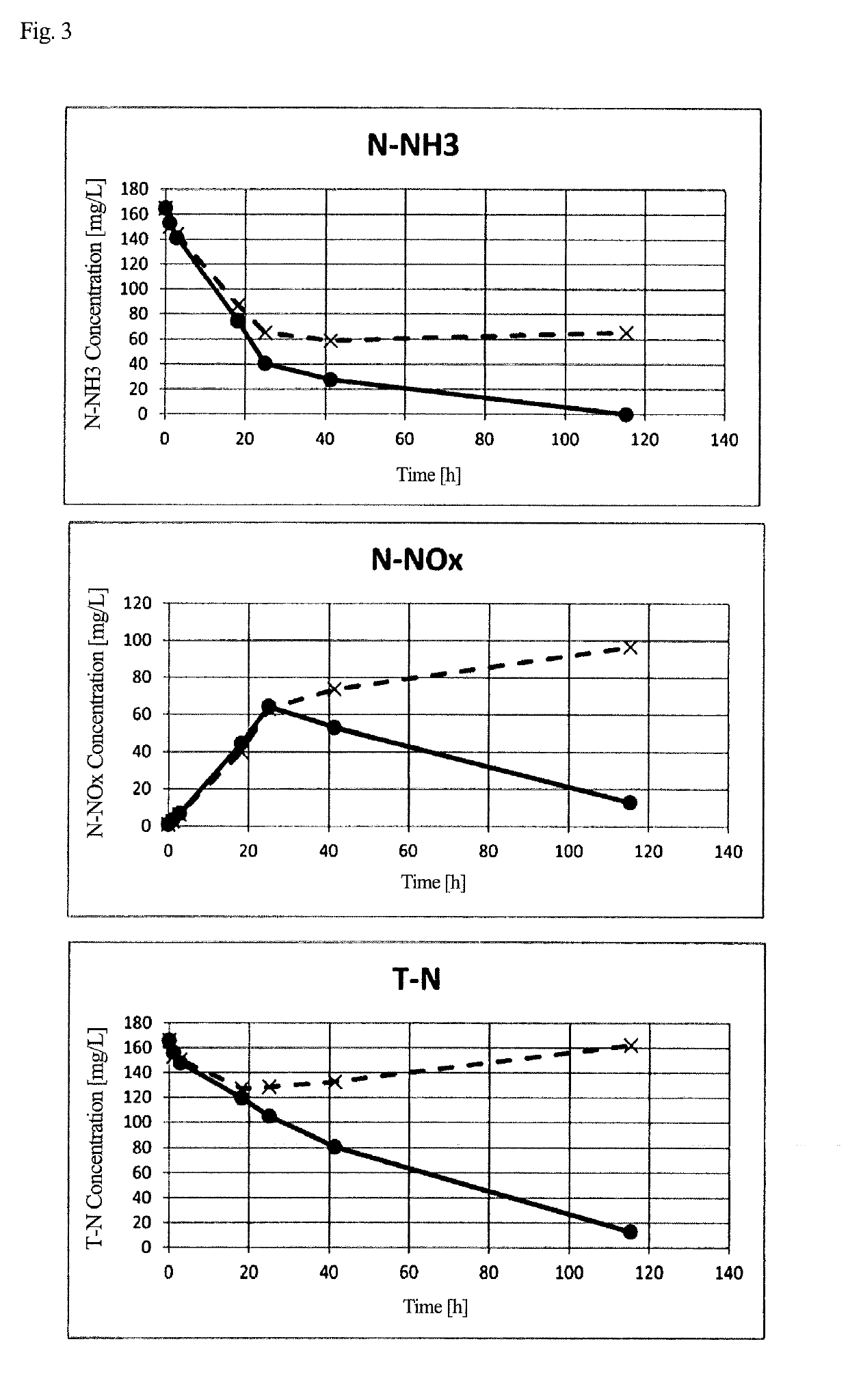Method for producing polyhydroxyalkanoic acid
- Summary
- Abstract
- Description
- Claims
- Application Information
AI Technical Summary
Benefits of technology
Problems solved by technology
Method used
Image
Examples
example 1
(Example 1) Verification Using Actual Waste Water
[0061]Verification was conducted using actual waste water generated in the PHA production step. As the actual waste water used for the verification, an aqueous phase discharged in the separation step of separating the PHA and the aqueous phase containing impurities other than the PHA was used. Specifically, waste water was used which was obtained by adjusting the retention time and / or centrifugal acceleration in centrifugation for adjusting the amount of PHBH contained in waste water in the step of recovering PHBH by separating PHBH and the aqueous phase through centrifugation from the PHBH suspension liquid obtained by the method described in paragraphs [0048] to [0050] in WO 2010 / 067543. The residual ratio of PHBH in the separation step at that time was 98.5% by weight.
[0062]For calculating the amount of PHBH contained in the used actual waste water, the actual waste water was centrifuged at 10000 G for 10 minutes, and PHBH containe...
PUM
 Login to View More
Login to View More Abstract
Description
Claims
Application Information
 Login to View More
Login to View More - R&D
- Intellectual Property
- Life Sciences
- Materials
- Tech Scout
- Unparalleled Data Quality
- Higher Quality Content
- 60% Fewer Hallucinations
Browse by: Latest US Patents, China's latest patents, Technical Efficacy Thesaurus, Application Domain, Technology Topic, Popular Technical Reports.
© 2025 PatSnap. All rights reserved.Legal|Privacy policy|Modern Slavery Act Transparency Statement|Sitemap|About US| Contact US: help@patsnap.com


